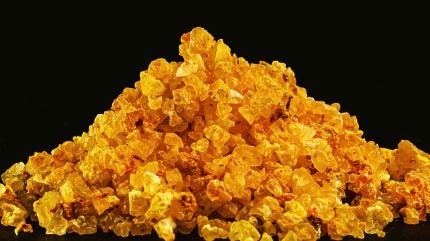
US uranium concentrate production reached a six-year high in 2024, surpassing levels not seen since 2018, according to the US Energy Information Administration’s (EIA) quarterly Domestic Uranium Production Report.
This surge was primarily driven by two in-situ recovery facilities in Texas and Wyoming, alongside the White Mesa Mill in Utah, the only operational uranium mill in the US.
Energy Fuels’ White Mesa Mill is capable of producing not only uranium but also rare earth minerals and vanadium. The company’s recent annual financial disclosure indicates a strategic focus on uranium production for 2025.
In the fourth quarter of 2024 (Q4 2024), uranium concentrate production in the US reached a total of 375,401lb, more than three-times the production of 121,296lb recorded in Q3.
This uranium output was generated at seven facilities: four in Wyoming, including the Nichols Ranch ISR Project, Lost Creek Project, Ross CPP and Smith Ranch-Highland Operation; two in Texas, including the Alta Mesa Project and Rosita; and one in Utah, the White Mesa Mill.
Uranium concentrate is a key material for nuclear reactors and certain medical applications.
The increased demand for electricity in the US, fuelled by data centres, local manufacturing and the electrification of transport and buildings, has reignited interest in nuclear energy.
Efforts are under way to restart two completely shut-down nuclear reactors, including one at the historic Three Mile Island site, reported Reuters.
In response, the federal government has awarded contracts to six companies for the production of uranium fuel.
In contrast, the US uranium market is slowing as nuclear power companies postpone purchases and new contracts amid President Trump’s tariff threats.


